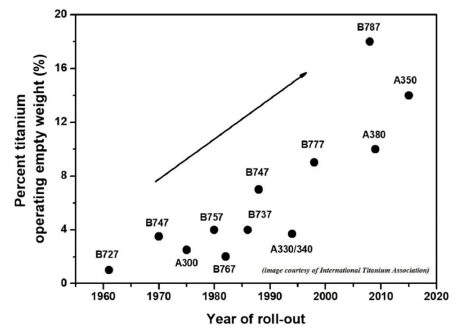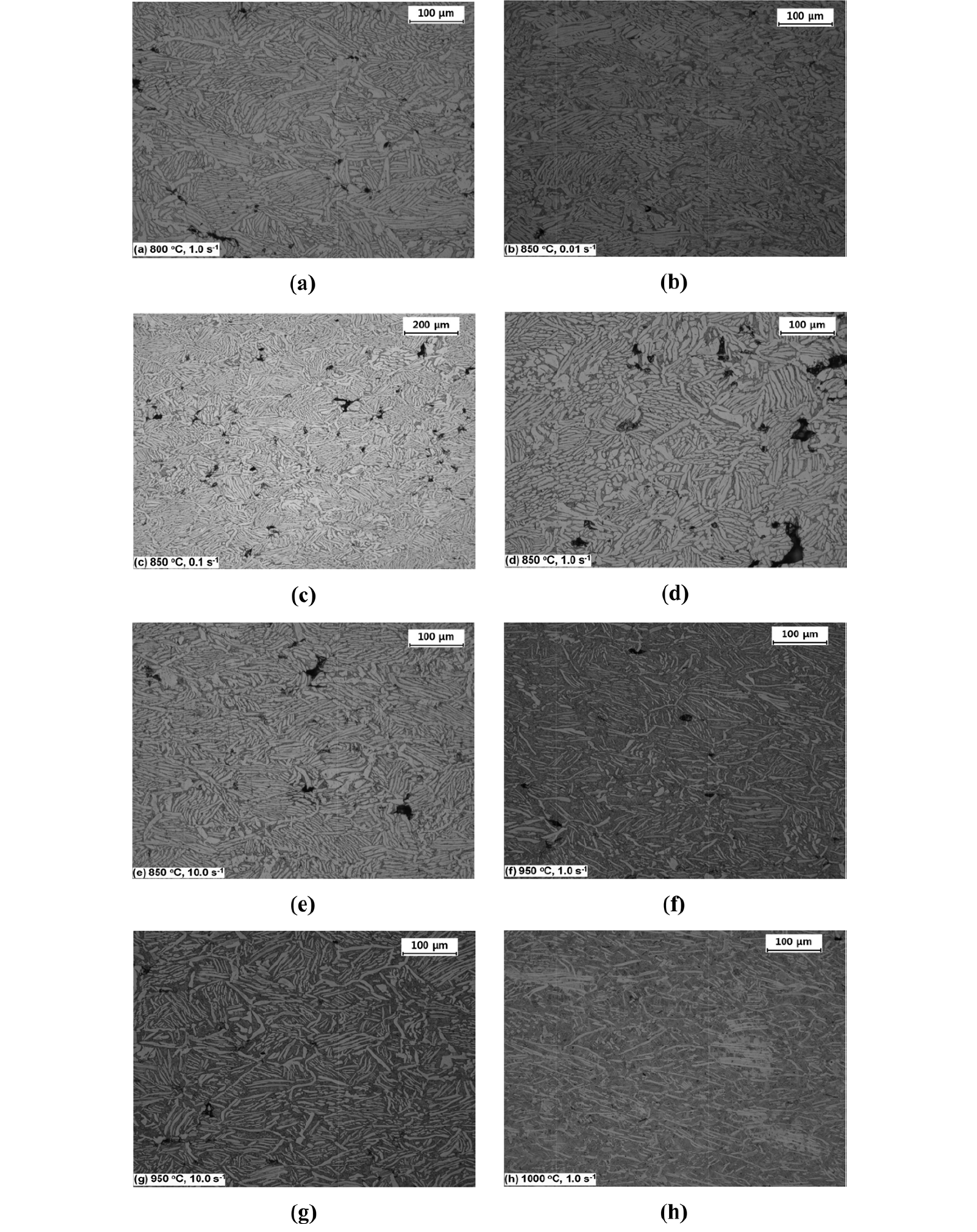Search
- Page Path
- HOME > Search
- [Korean]
- Effects of Powder Shape and Densification Mechanism on the Microstructures and Mechanical Properties of Ti-6Al-4V Components
- Youngmoo Kim, Young-Sam Kwon, Young-Beom Song, Sung Ho Lee
- J Korean Powder Metall Inst. 2019;26(4):311-318. Published online August 1, 2019
- DOI: https://doi.org/10.4150/KPMI.2019.26.4.311

- 586 View
- 2 Download
-
 Abstract
Abstract
 PDF
PDF The objective of this study is to investigate the influence of powder shape and densification mechanism on the microstructure and mechanical properties of Ti-6Al-4V components. BE powders are uniaxially and isostatically pressed, and PA ones are injection molded because of their high strengths. The isostatically compacted samples exhibit a density of 80%, which is higher than those of other samples, because hydrostatic compression can lead to higher strain hardening. Owing to the higher green density, the density of BE-CS (97%) is found to be as high as that of other samples (BE-DS (95%) and P-S (94%)). Furthermore, we have found that BE powders can be consolidated by sintering densification and chemical homogenization, whereas PA ones can be consolidated only by simple densification. After sintering, BE-CS and P-S are hot isostatically pressed and BE-DS is hot forged to remove residual pores in the sintered samples. Apparent microstructural evolution is not observed in BE-CSH and P-SH. Moreover, BE-DSF exhibits significantly fine grains and high density of low-angle grain boundaries. Thus, these microstructures provide Ti-6Al-4V components with enhanced mechanical properties (tensile strength of 1179 MPa).
- [Korean]
- Hot Deformation Behavior and Microstructural Evolution of Powder Metallurgy Ti-6Al-4V Alloy
- Youngmoo Kim, Young-Beom Song, Sung Ho Lee, Young-Sam Kwon
- J Korean Powder Metall Inst. 2014;21(4):277-285. Published online August 1, 2014
- DOI: https://doi.org/10.4150/KPMI.2014.21.4.277

- 792 View
- 9 Download
- 3 Citations
-
 Abstract
Abstract
 PDF
PDF The effects of processing parameters on the flow behavior and microstructures were investigated in hot compression of powder metallurgy (P/M) Ti-6Al-4V alloy. The alloy was fabricated by a blended elemental (B/E) approach and it exhibited lamellar α+β microstructure. The hot compression tests were performed in the range of temperature 800-1000°C with 50°C intervals, strain rate 10−4-10 s−1, and strain up to 0.5. At 800-950°C, continuous flow softening after a peak stress was observed with strain rates lower than 0.1 s−1. At strain rates higher than 1 s−1, rapid drop in flow stress with strain hardening or broad oscillations was recorded. The processing map of P/M Ti-6Al-4V was designed based on the compression test and revealed the peak efficiency at 850°C and 0.001 s−1. As the processing temperature increased, the volume fraction of β phase was increased. In addition, below 950°C, the globularization of phase at the slower strain rate and kinking microstructures were found. Based on these data, the preferred working condition of the alloy may be in the range of 850-950°C and strain rate of 0.001-0.01 s−1.
-
Citations
Citations to this article as recorded by- Microstructure control and dynamic recrystallization behavior analysis in hot forging of metastable beta Ti-5Mo-4Fe alloy
In-Kyeong Jin, Jae-Gwan Lee, Yong-Jae Lee, Dong-Geun Lee
Journal of Alloys and Compounds.2025; 1010: 178125. CrossRef - High Temperature Deformation and Microstructural Evolution of Homogenized AA 2026 Alloy
HyeonWoo Kang, SooBin Kim, ByoungLok Jang, HeeKook Kim
Korean Journal of Metals and Materials.2023; 61(5): 338. CrossRef - Effect of Fe Content on the Microstructure and Mechanical Properties of Ti-Al-Mo-V-Cr-Fe Alloys
K.C. Bae, J.J. Oak, Y.H. Kim, Y.H. Park
Archives of Metallurgy and Materials.2017; 62(2): 1105. CrossRef
- Microstructure control and dynamic recrystallization behavior analysis in hot forging of metastable beta Ti-5Mo-4Fe alloy
- [Korean]
- Characterization of Hot Isostatically Pressed Ni-Based Superalloy IN 713C
- Youngmoo Kim, Eun-Pyo Kim, Seong-Taek Chunga, Seong Lee, Joon-Woong Noh, Sung Ho Lee, Young-Sam Kwon
- J Korean Powder Metall Inst. 2013;20(4):264-268.
- DOI: https://doi.org/10.4150/KPMI.2013.20.4.264

- 712 View
- 4 Download
- 1 Citations
-
 Abstract
Abstract
 PDF
PDF - Nickel-based superalloy IN 713C powders have been consolidated by hot isostatic pressing (HIPing). The microstructure and mechanical properties of the superalloys were investigated at the HIPing temperature ranging from 1030°C to 1230°C. When the IN 713C powder was heated above gammaprime solvus temperature (about 1180°C), the microstructure was composed of the austenitic FCC matrix phase gamma plus a variety of secondary phases, such as gammaprime precipitates in gamma matrix and MC carbides at grain boundaries. The yield and tensile strengths of HIPed specimens at room temperature were decreased while the elongation and reduction of area were increased as the processing temperature increased. At 700°C, the strength was similar regardless of HIPing temperature; however, the ductility was drastically increased with increasing the temperature. It is considered that these properties compared to those of cast products are originated from the homogeneity of microstructure obtained from a PM process.
-
Citations
Citations to this article as recorded by- Sintering and Microstructures of SUS 316L Powder Produced by 3D Printing Process
W.J. Kim, H.-H. Nguyen, H.Y. Kim, M.-T. Nguyen, H.S. Park, J.-C. Kim
Archives of Metallurgy and Materials.2017; 62(2): 1215. CrossRef
- Sintering and Microstructures of SUS 316L Powder Produced by 3D Printing Process
- [Korean]
- A Study on the Sintering Behavior of T42 High Speed Steel by Powder Injection Molding (PIM) Process
- Dong-Wook Park, Hye-Seong Kim, Young-Sam Kwon, Kwon-Koo Cho, Su-Gun Lim, In-Shup Ahn
- J Korean Powder Metall Inst. 2012;19(2):117-121.
- DOI: https://doi.org/10.4150/KPMI.2012.19.2.117

- 711 View
- 0 Download
- 1 Citations
-
 Abstract
Abstract
 PDF
PDF - Tool steels serve a large range of applications including hot and cold workings of metals and injection mouldings of plastics or light alloys. The high speed steels (HSS) are specifically used as cutting tools and wear parts because it has high strength, wear resistance and hardness along with appreciable toughness and fatigue resistance. From the view of HSS microstructure, it can be described as metallic matrix composites formed by a ferrous with a dispersion of hard and wear resistant carbides. The experimental specimens were manufactured using the PIM with T42 powders (50~80 vol.%) and polymer (20~50 vol.%). The green parts were debinded in n-hexane solution at 60°C for 8 hours and thermal debinded at an N_2-H_2 mixed gas atmosphere for 8 hours. Specimens were sintered in high vacuum (10-5 Torr) and various temperatures.
-
Citations
Citations to this article as recorded by- Effects Of Process Parameters On Cu Powder Synthesis Yield And Particle Size In A Wet-Chemical Process
Y.M. Shin, J.-H. Lee
Archives of Metallurgy and Materials.2015; 60(2): 1247. CrossRef
- Effects Of Process Parameters On Cu Powder Synthesis Yield And Particle Size In A Wet-Chemical Process
- [Korean]
- The Characteristic Changes of Sintered WC-10Co Fabricated by PIM Method with Different Carbon Content
- Sang-Dae Kang, Dong-Wook Park, Young-Sam Kwon, Kwon-Koo Cho, In-Shup Ahn
- J Korean Powder Metall Inst. 2011;18(3):262-268.
- DOI: https://doi.org/10.4150/KPMI.2011.18.3.262

- 367 View
- 0 Download
-
 Abstract
Abstract
 PDF
PDF - In order to investigate the microstructure and mechanical properties of WC-10 wt% Co insert tool alloy fabricated by PIM (Powder Injection Molding) process, the feedstock of WC-10 wt% and wax used as a kind of binder were mixed together by two blade mixer. After injection molding, the debinding process was carried out by two-steps. First, solvent extraction, in which the binder was eliminated by putting the specimen into normal hexane for 24 hrs at 60°C, and subsequently thermal debinding which was conducted at 260°C and 480°C for 6 hrs in the mixed gas of H_2/N_2, respectively. Meantime, in order to compensate the decarburization due to hydrogen, 1.2~1.8% of carbon was added to ensure the integrity of the phase. Finally, the specimens were sintered in vacuum under different temperatures, and the relative density of 99.8% and hardness of 2100 Hv can be achieved when sintered at 1380°C, even the TRS is lower than the conventional sintering process.
- [Korean]
- The Microstructural Properties Change Owing to the Sintering Condition of T42 High Speed Steel Produced by Powder Injection Molding Process
- Kyoung-Rok Do, Sung-Hyun Choi, Young-Sam Kwon, Kwon-Koo Cho, In-Shup Ahn
- J Korean Powder Metall Inst. 2010;17(4):312-318.
- DOI: https://doi.org/10.4150/KPMI.2010.17.4.312

- 404 View
- 0 Download
-
 Abstract
Abstract
 PDF
PDF - High speed steels (HSS) were used as cutting tools and wear parts, because of high strength, wear resistance, and hardness together with an appreciable toughness and fatigue resistance. Conventional manufacturing process for production of components with HSS was used by casting. The powder metallurgy techniques were currently developed due to second phase segregation of conventional process. The powder injection molding method (PIM) was received attention owing to shape without additional processes. The experimental specimens were manufactured with T42 HSS powders (59 vol%) and polymer (41 vol%). The metal powders were prealloyed water-atomised T42 HSS. The green parts were solvent debinded in normal n-Hexane at 60°C for 24 hours and thermal debinded at N_2-H_2 mixed gas atmosphere for 14 hours. Specimens were sintered in N_2, H_2 gas atmosphere and vacuum condition between 1200 and 1320°C. In result, polymer degradation temperatures about optimum conditions were found at 250°C and 480°C. After sintering at N_2 gas atmosphere, maximum hardness of 310Hv was observed at 1280°C. Fine and well dispersed carbide were observed at this condition. But relative density was under 90%. When sintering at H_2 gas atmosphere, relative density was observed to 94.5% at 1200°C. However, the low hardness was obtained due to decarbonization by hydrogen. In case of sintering at the vacuum of 10-5 torr at temperature of 1240°C, full density and 550Hv hardness were obtained without precipitation of MC and M_6C in grain boundary.
- [Korean]
- Development of a CAE Tool for P/M Compaction Process and Its Application
- Suk-Hwan Chung, Young-Sam Kwon
- J Korean Powder Metall Inst. 2004;11(5):399-411.
- DOI: https://doi.org/10.4150/KPMI.2004.11.5.399

- 771 View
- 0 Download
- 2 Citations
-
 Abstract
Abstract
 PDF
PDF - Crack generation during die compaction and distortion during sintering have been critical problems for the conventional pressing and sintering process. Until now, trial and error approach with engineers' industrial experiences has been only solution to protect the crack generation and distortion. However, with complexity in shape and process it is very difficult to design process conditions without CAE analysis. We developed the exclusive CAE software (PMsolver/Compaction) for die compaction process. The accuracy of PMsolver is verified by comparing the finite element simulation results with experimental results. The simplified procedures to find material properties are proposed and verified with iron based powder and tungsten carbide powder. Based on the accurate simulation result by PMsolver, the optimal process conditions are designed to get uniform density distribution in a powder compact after die compaction process by using a derivative based optimization scheme. In addition, the effect of non-uniform density distribution in a powder compact on distortion during sintering is shown in case of the fabrication of tungsten carbide insert.
-
Citations
Citations to this article as recorded by- Analysis of cold compaction for Fe-C, Fe-C-Cu powder design based on constitutive relation and artificial neural networks
Da Seul Shin, Chi Hun Lee, Suk Hyun Kim, Dong Yong Park, Joo Won Oh, Chang Woo Gal, Jin Mo Koo, Seong Jin Park, Seung Chul Lee
Powder Technology.2019; 353: 330. CrossRef - A Study on the Structural Analysis for Plastic Door Handle of Automobile
S.R. Park, D.C. Shim, D. Kim, M.Y. Lyu
Transactions of Materials Processing.2010; 19(3): 185. CrossRef
- Analysis of cold compaction for Fe-C, Fe-C-Cu powder design based on constitutive relation and artificial neural networks
TOP
 KPMI
KPMI


 First
First Prev
Prev


